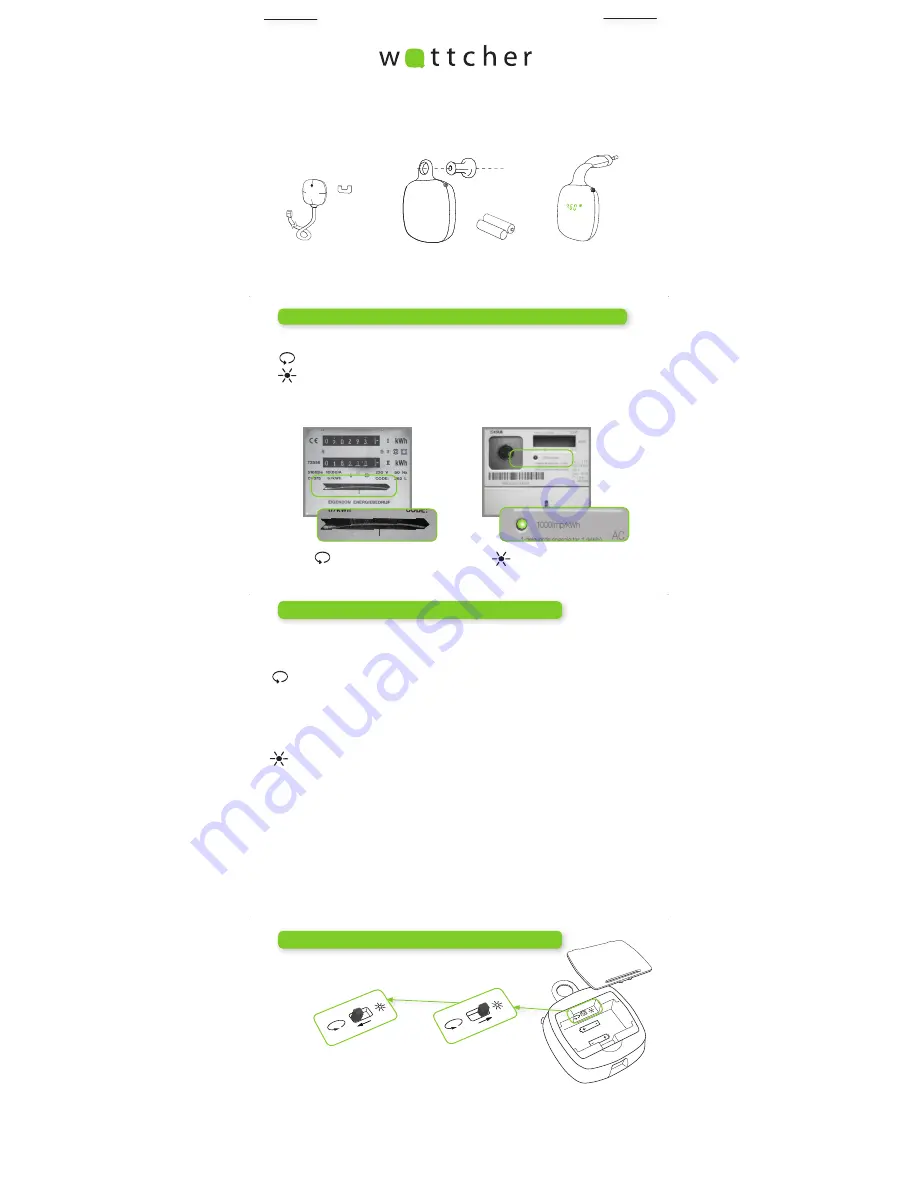
Step 3: Install the sending unit
The Wattcher shows your home´s total energy consumption in a beautiful way.
Together with Wattcher Online it gives insight in your daily activities and helps
you to save energy.
Your Wattcher comes with the following components:
Step 1: Determine your type of electricity meter
Electricity meters come in two types:
A electromechanical meter has a rotating metal disk.
A digital pulse meter has a blinking LED, or pulse light.
There are also LEDs with an infrared light, invisible to the human eye but visible to
the Wattcher’s sensor.
Sensor
Measures your electricity
use at the meter
Sending unit
Sends the information
to the Wattcher
Wattcher
Displays your energy
consumption
velcro tape
hook
2 AA batteries
quick manual
- installation
Electromechanical meter
with rotating metal disk
Digital pulse meter
with blinking LED
Step 2: Read your C-Value
The C-value is a
number
on your meter. On an electromechanical meter, it states the
wheel’s turning speed. On a pulse meter, it is the blink frequency. Please follow the
instructions below to read your meter’s C-value. You will need this in step 5.
For Electromechanical meters:
The C-value should be written on your meter as
C =
......
, a =
........
or as
......
r/kWh,
.......
tr/kWh
or
........
U/kWh
. Write down the C-value (for example 600).
Note: if you see a = ........ on your meter, multiply that number by 60 to obtain the
correct C-value (e.g. a = 10 -> C-value = 10 x 60 = 600)
For Pulse meters:
The C-value should be written on your meter as .......
imp/kWh
, .......
pulses/kWh,
........
p/kWh
or
........
Wh/imp
. Write down the C-value (for example 1000).
Note: if your see ..... Wh/imp, then divide 1000 by that number to get the correct
C-value (e.g. 0,5 Wh/imp -> C- value = 1000 / 0,5 = 2000). If your meter denotes
imp/kVarh
or has the addition
R53
or
SO
, that value should not be used (it indicates
the variance in usage).
If you have any doubts or if more than
one number is written on your meter, please
check page 6 and 7 of the comprehensive manual to determine the correct C-value.
You can download the comprehensive manual on www.wattcher.com/manuals
1. Open the battery cover on the back.
2. Slide the switch to the correct position (see drawing).
Do you have a pulse meter?
Slide the switch to the right.
Electromechanical meter?
Slide the switch to the left.
3. Place the batteries: check the correct polarity (+ and -).
4. Attach the hook on the wall next to the electricity meter.
5. Hang the sending unit on the hook.
6. Insert the sensor’s cable into the sending unit.
Pay attention
WA1 new functions


